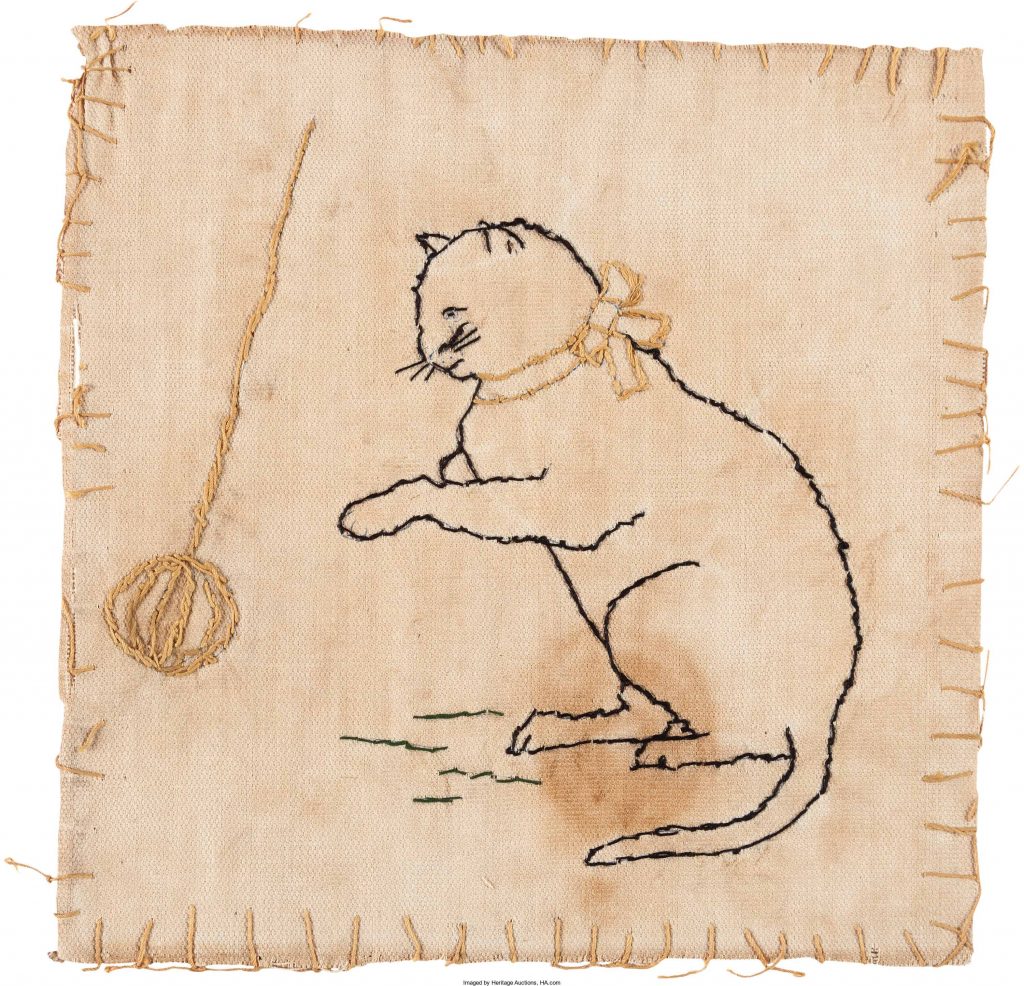"Total Eclipse of the Heart" Is About Vampire Love
“But with ‘Total Eclipse of the Heart,’ I was trying to come up with a love song and I remembered I actually wrote that to be a vampire love song. Its original title was ‘Vampires in Love’ because I was working on a musical of `Nosferatu,’ the other great vampire story. If anyone listens to the lyrics, they’re really like vampire lines. It’s all about the darkness, the power of darkness and love’s place in dark. And so I figured ‘Who’s ever going to know; it’s Vienna!’ And then it was just hard to take it out.”
[via]
I’m still waiting for the ultimate Jim Steinman magazine profile…
Just The Steve Bannon Parts

If you are a devoted and loyal reader of my Awl, you will be familiar with Luke Mazur’s mostly weekly series of Jared Kusher “foe fic,” now helpfully organized under one roof, the slug “All in the Family.” For the past few days, but also weeks and months that feel like years, followers of the news media have been subjected to many high-resolution images of Stephen K. Bannon’s dermatologic cornucopia of a face, many of which have been photoshopped and altered with higher contrast or greater sharpness. This morning, Damon Young at The Root wonders if Bannon has “greyscale,” which I was expecting to mean the philosophical ability to see anything that isn’t black or white but is in fact a skin ailment from the television series about medieval sex elves and their pet dragons. This reminded me that one of the best things about Luke’s series is the flickers of the imagined Bannon persona we get in each “episode”—perhaps you can pair them with your favorite Bannon portrait, photoshopped or not. Here are a few of my favorites:
Kiasmos, "Blurred"
If what your morning needs is a whole lot of “no words,” boy did you come to the right place. Enjoy.
New York City, August 14, 2017
 ★★★ Dark clouds hung under lighter clouds and the black shapes of birds crossed below them all. The air was still and the ambient temperature seemed to require no thermal exchange. People with armloads of real-looking, mass-printed protest signs walked past a film setup where people held stagey-looking individual protest signs. A little breeze stirred but the light stayed flat and disorienting. The grays above smoothed out; the sun was a compact dot posing no threat to the naked eye. The after-dinner game of catch in the forecourt had to avoid a puddle of melted ice cream. A spritz of rain fell and then thin blue spots emerged. Ripples of pink and blue spread over the suddenly glowing west, and wash after wash of new color appeared, always cut with other hues for contrast, ending on a rich violet topped by indigo.
★★★ Dark clouds hung under lighter clouds and the black shapes of birds crossed below them all. The air was still and the ambient temperature seemed to require no thermal exchange. People with armloads of real-looking, mass-printed protest signs walked past a film setup where people held stagey-looking individual protest signs. A little breeze stirred but the light stayed flat and disorienting. The grays above smoothed out; the sun was a compact dot posing no threat to the naked eye. The after-dinner game of catch in the forecourt had to avoid a puddle of melted ice cream. A spritz of rain fell and then thin blue spots emerged. Ripples of pink and blue spread over the suddenly glowing west, and wash after wash of new color appeared, always cut with other hues for contrast, ending on a rich violet topped by indigo.
Exclamation Point, 2003-201?
…Sicha has spent the past decade developing what has become the lingua franca of the Internet: un-snobbish endorsements, presented in a candid, self-consciously hysterical tone. (A recent tweet: “Vicious news cycle today! Like many others, I just got bumped by Weiner.”) His humorously helpful parentheticals, doubt-inducing scare quotes, casual “like”s dropped carefully amidst otherwise competent sentences, and gratuitous exclamation points litter the online landscape. When typed by Sicha, though, these superficial markers of style—so easy to replicate!—communicate a set of core values that he’s carried with him from job to job: genuine egalitarianism, acrobatic diplomacy, unregulated intimacy.
Once upon a time The New Yorker (dot com) wrote about our dear Awl co-founder’s “idiomatic dominion,” with especial focus on the gratuitous exclamation point—I don’t know about you but they just don’t do it for me anymore. Has this motherfucker ruined them for anyone else?
Michi Preachy
“she attained a status in New York somewhere between Edmund Wilson and Dr. Zizmor.”
Boris Kachka + Historically Contextualized and Well-Researched Tales From Ye Olde New York Publishing Worlde = OTP.
The Loneliness of the Female Nihilist

In 1926, a twenty-year-old girl held in the women’s branch of Tokyo’s Utsunomiya Prison asked if she could help weave a length of rope. The girl, Kaneko Fumiko, was an anarchist and a nihilist; she was proud, preternaturally bold, and had been accused of plotting to blow up the Japanese imperial family. After months of defiantly refusing to do any prison work she suddenly changed her mind, and the prison authorities shrugged and agreed that she could be put on the rope-weaving taskforce. She twisted hemp into rope for an entire day; by 6:30 the next morning a guard passing by her cell noticed that she was already back to work. Ten minutes later, she’d be dead.
Fumiko was dirt poor, barely educated, beaten, starved, abused, and yet managed to claw her way to a position of political and historical significance. But very few historians bother to study her, and even fewer readers delve into the anarchical and darkly inspiring depths of her memoir. She came of age during a time when Japan was divided, and heavily policed; the country had annexed Korea in 1910, creating serious tensions between the two nations, and Fumiko—with her own reasons for resenting the authorities of her homeland—fell in with anarchists associated with the Korean independence movement.
She had always distrusted any form of activism. A nihilistic egoist, influenced by Nietzsche and Max Stirner, Fumiko believed that asserting the self was the best means of political resistance, that anarchy could be individualistic, that society was a howling void in which the strong devoured the weak, and that political movements offered no relief. “What is revolution, then, but the replacing of one power with another?” she wrote in her memoir. The only worthy action, she thought, was to “stake [her] life” on rebelling against authority. In jail, she wrote that death was freedom—“if one has but the will to die.”
When a judge asked Fumiko to write her memoirs, taking advantage of a lesser-known law that said “a defendant should be asked not only about what can be used against one, but about things that may stand in one’s favor,” Fumiko dove into the painful muck of her past in order to explain how society had “warped” her into the nihilist she was today (the original title of her memoir was, What Made Me Do What I Did). When the judge had finished reading it, she asked for the manuscript back—she wanted to send it to her comrades, hoping that they would publish it, to “help them to understand me better.” This simple wish, sketched in the preface, is heartbreakingly vulnerable for a girl who claimed to believe in nothing but the self. It went unheeded: her friends did not immortalize her, and her prison records stayed sealed until after World War II.
T.S. Eliot's Needlepoint, Sailors' Valentines, and Ronald McDonald
Lot 1: The Tale of Tom’s Kitten

Courtesy of Heritage Auctions
If the musical Cats has a point of origin, it may be right here on this dainty square of linen bearing the embroidered image of a cat and his yarn ball, executed in yellow, green, and black thread. It was made by six-year-old Thomas Stearns Eliot, later known as T.S. Eliot, the austere English poet who published a book of verse in 1939 called Old Possum’s Book of Practical Cats, which became the basis for Andrew Lloyd Webber’s Tony Award-winning glam-cat success.
But this little scrap of needlepoint derives from Eliot’s deep dark past—before he wrote his most famous work, “The Waste Land,” before he won the Nobel Prize in Literature, before he was even British. Say what? Eliot was born in St. Louis, Missouri, and he lived there for the first sixteen years of his life. (He renounced his American citizenship in 1927 at the age of 39.) As a child, he fashioned this kitty as a Christmas gift, and it is signed “Tom” in pencil on the back. The American Eliots have cherished it ever since, according to Heritage Auctions.
Next month, however, this piece of literary/Broadway ephemera goes to auction, conservatively valued at $1,000. If that’s not reason enough to revisit the musical’s Macavity scene, what is?
Yumi Zouma, "Depths (Pt. I)"
You don’t need me to tell you what’s terrible (everything) so let me just tell you what’s good: Yumi Zouma. I am still enraptured by the first single from their forthcoming record, and here is another one. You know what’s terrible out there (everything). This, at least, is not. Enjoy.

